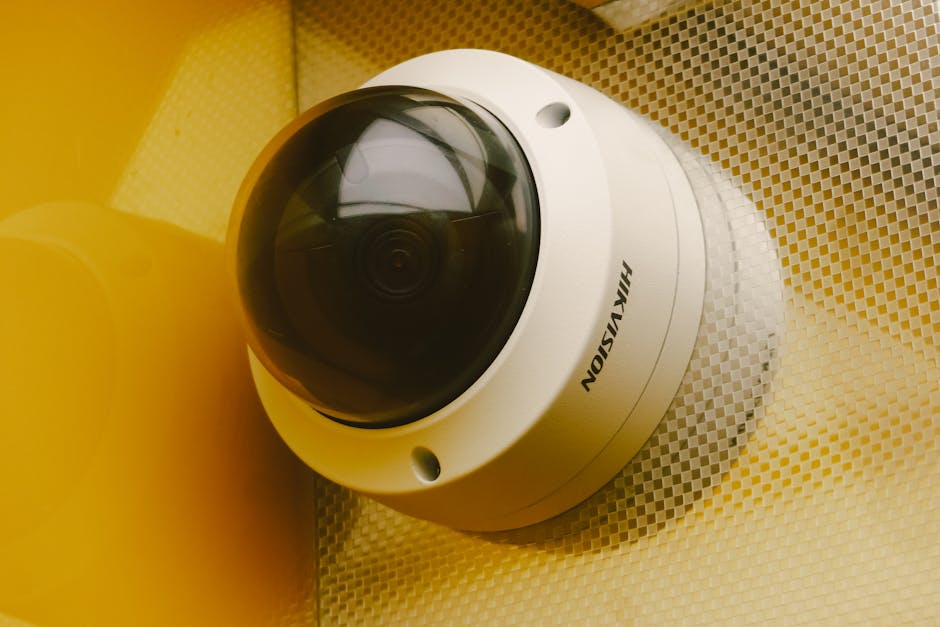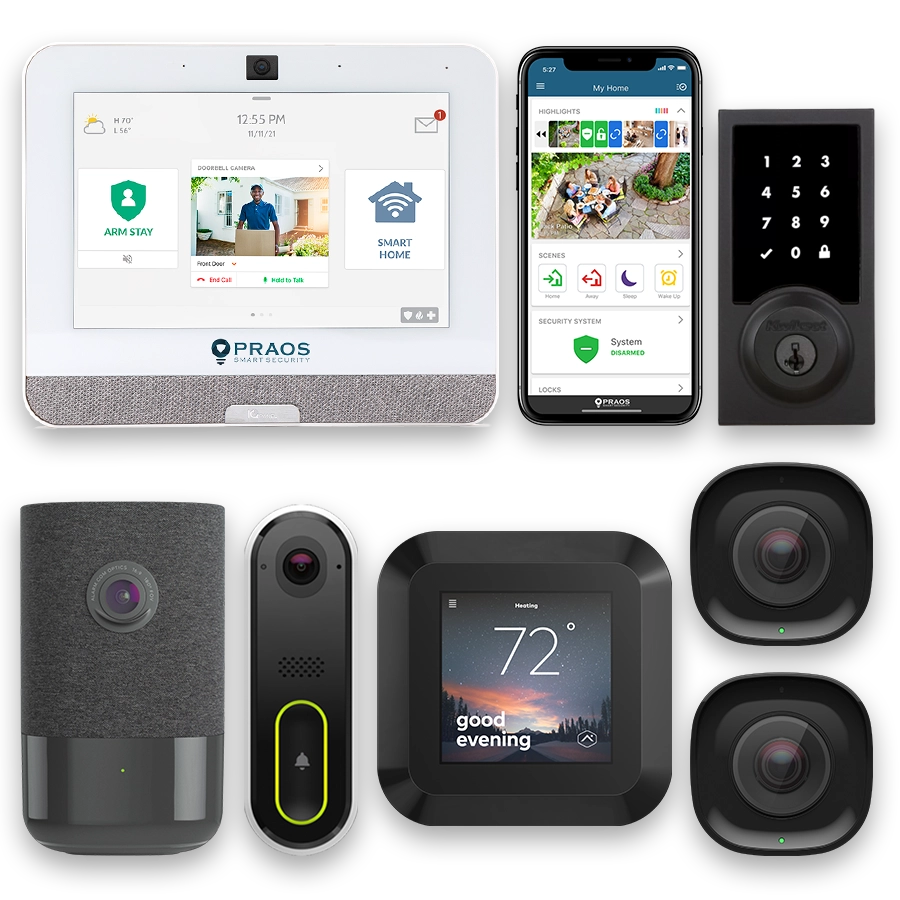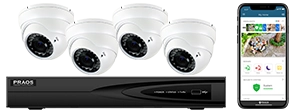- Introduction to Modern Surveillance Systems and Privacy Concerns
- Legal Frameworks and Regulations Governing Surveillance and Data Protection
- Technological Advances in Surveillance: Benefits and Risks
- Best Practices for Security Monitoring While Ensuring Privacy
- Case Studies: Real-world Implementations and Lessons Learned
- Ethical Considerations in Surveillance and Data Protection
- Future Trends in Surveillance Technology and Privacy Protection
- Conclusion: Balancing Security and Privacy in a Digital World
Introduction to Modern Surveillance Systems and Privacy Concerns
Modern surveillance systems have become an integral part of contemporary security frameworks across the globe. These systems, designed to enhance safety and security, often deploy advanced technologies such as high-definition cameras, biometric sensors, and sophisticated data analytics to monitor and analyze activities in various settings. These capabilities significantly improve the ability to prevent and respond to incidents, thereby ensuring public safety and organizational security.
However, the increased deployment of these surveillance systems has raised significant concerns regarding the protection of personal data. Critics argue that such systems can lead to invasions of privacy, potential misuse of collected data, and the erosion of individual freedoms. According to a report by the American Civil Liberties Union (ACLU), the pervasive use of surveillance technologies can create an environment of constant monitoring, affecting how individuals behave and interact in monitored spaces.
The advent of the General Data Protection Regulation (GDPR) in the European Union, which emphasizes strict guidelines on data collection, storage, and usage, reflects global concerns about privacy in the digital age. Additionally, similar regulations such as the California Consumer Privacy Act (CCPA) aim to provide greater control to individuals over their personal data. These legal frameworks are crucial in ensuring that surveillance practices do not infringe on privacy rights.
Moreover, public opinion on surveillance varies widely, influencing how these systems are perceived and implemented. According to a Pew Research Center survey, a significant percentage of the population is concerned about the potential misuse of surveillance data. This apprehension underscores the necessity of balancing effective security measures with robust data protection mechanisms.
In conclusion, as surveillance systems become more advanced and ubiquitous, addressing privacy concerns remains a critical challenge. Effective security monitoring must be balanced with the protection of personal data to maintain public trust and comply with legal standards. This balance ensures that while security measures evolve, they do not come at the cost of individual privacy and freedom.
Legal Frameworks and Regulations Governing Surveillance and Data Protection
The legal frameworks and regulations governing surveillance and data protection vary significantly across different jurisdictions, reflecting the diversity in privacy norms and security priorities. However, some international standards serve as benchmarks for developing these regulations. One of the most influential pieces of legislation in this domain is the General Data Protection Regulation (GDPR) enacted by the European Union (EU).
The GDPR emphasizes the importance of protecting personal data and sets strict guidelines on how data should be collected, processed, and stored. It mandates that surveillance systems must have a clear and legitimate purpose for data collection, ensure data minimization, and provide individuals with rights over their data, including access, correction, and deletion.
In the United States, the regulatory landscape is more fragmented, with different states enacting their own privacy laws. Notable among them is the California Consumer Privacy Act (CCPA), which grants California residents rights similar to those under the GDPR. The CCPA requires businesses to be transparent about data collection practices and allows consumers to opt out of the sale of their personal information.
Furthermore, the Health Insurance Portability and Accountability Act (HIPAA) sets standards for the protection of health information in the US by mandating secure handling of PHI (Protected Health Information). For surveillance systems utilized in healthcare environments, compliance with HIPAA is essential to ensure patient privacy.
Other countries have also implemented comprehensive data protection laws. For instance, Canada’s Personal Information Protection and Electronic Documents Act (PIPEDA) governs how private sector organizations collect, use, and disclose personal information during commercial activities. PIPEDA requires organizations to obtain consent from individuals before collecting their data and outlines principles for data accuracy and security.
Similarly, Australia’s Privacy Act regulates the handling of personal information by both government agencies and private organizations. The Act provides individuals with rights to access and correct their personal information and imposes obligations on entities to protect data from misuse, interference, and loss.
On a global scale, the International Covenant on Civil and Political Rights (ICCPR), adopted by many countries, asserts the right to privacy and safeguards against arbitrary interference. While not legally binding, it influences national laws and policies on data protection.
In addition to specific laws, various regulatory bodies and frameworks play roles in surveillance and data protection. The International Organization for Standardization (ISO) has developed standards like ISO/IEC 27701 for privacy information management, which provide guidelines for establishing, implementing, maintaining, and continually improving a Privacy Information Management System (PIMS).
Compliance with these legal frameworks and regulations requires organizations to be diligent and proactive. Regular audits, impact assessments, and adoption of privacy by design principles are critical practices for ensuring adherence to legal requirements and maintaining the balance between effective security monitoring and personal data protection.
Technological Advances in Surveillance: Benefits and Risks
Modern surveillance systems have seen significant advancements in recent years, driven by technological innovation and the growing need for effective security solutions. However, these advancements bring with them both notable benefits and considerable risks, especially concerning personal data protection.
One of the primary benefits of technological advances in surveillance is enhanced security capabilities. Modern systems employ high-definition cameras, night vision, and thermal imaging to provide comprehensive monitoring in various conditions. Advanced video analytics powered by artificial intelligence (AI) and machine learning (ML) enable real-time detection of suspicious activities, reducing the likelihood of security breaches. For instance, facial recognition technology can assist in identifying individuals of interest, thus aiding law enforcement in ensuring public safety.
Another major benefit is improved efficiency and automation. Automation reduces the need for human operators to continuously monitor video feeds, which can be error-prone and resource-intensive. AI algorithms can filter through vast amounts of data, flagging only relevant events for human review. This not only enhances the effectiveness of surveillance systems but also optimizes resource allocation.
Despite these benefits, the integration of advanced technologies in surveillance systems carries significant risks, primarily related to privacy concerns and data misuse. One of the critical risks is the potential for mass surveillance. The pervasive use of facial recognition and other biometric technologies raises the specter of a surveillance state where individuals’ actions are continuously monitored, stored, and potentially misused. This has raised concerns about the erosion of civil liberties and the right to privacy.
Data security is another significant risk. As surveillance systems collect vast amounts of sensitive data, they become prime targets for cyber-attacks. Successful breaches can lead to unauthorized access to personal information, posing serious threats to individuals’ privacy. For example, the 2020 Verkada data breach exposed footage from thousands of surveillance cameras worldwide, highlighting the vulnerabilities in even well-known systems.
Additionally, there is the problem of data retention and misuse. Without strict regulations and protocols, data collected through surveillance could be retained indefinitely or misused by entities with access to it. This could lead to unintended consequences such as discrimination, profiling, or other forms of abuse.
In conclusion, while technological advances in surveillance bring substantial benefits in terms of security and operational efficiency, they also introduce significant risks, particularly related to privacy and data protection. These risks necessitate a careful balancing act, ensuring that the deployment of advanced surveillance technologies does not compromise individual privacy rights. It is essential for stakeholders to adopt comprehensive data protection measures, comply with legal regulations, and stay vigilant to mitigate the potential downsides of modern surveillance systems.
Best Practices for Security Monitoring While Ensuring Privacy
4. Best Practices for Security Monitoring While Ensuring Privacy
Balancing effective security monitoring with personal data protection in modern surveillance systems requires a strategic approach focused on best practices. These practices ensure both the safety and privacy of individuals. Below are some key best practices adopted by leading companies, such as Praos, to strike this balance:
1. Data Minimization and Anonymization
Data minimization limits the data collected to only what is necessary for security purposes. Anonymization techniques are employed to remove personally identifiable information (PII) from the collected data. This reduces the risk of privacy breaches.
2. Transparent Data Policies
Organizations must maintain transparency about their data collection and utilization policies. Companies like Praos ensure that customers are thoroughly informed about what data is being collected, how it is stored, and the purposes for which it is used.
3. Secure Data Storage and Transmission
Ensuring secure storage and transmission of data is paramount. Encryption methods are applied to secure data both in transit and at rest. Praos integrates advanced encryption standards to safeguard surveillance footage and personal data from unauthorized access.
| Security Practice | Explanation |
|---|---|
| Data Minimization | Collecting only necessary data and anonymizing PII |
| Transparency | Providing clear data policies to customers |
| Data Encryption | Encrypting data during storage and transmission |
4. Implementing Strong Access Controls
Restricting access to surveillance data to authorized personnel only is crucial. Strong authentication mechanisms and role-based access controls (RBAC) are used to manage who can view and manage the data. Praos ensures that access to their integrated app is secured with multifactor authentication (MFA).
5. Regular Security Audits and Updates
Conducting regular security audits and updates helps identify vulnerabilities and ensure that the surveillance system stays up to date with the latest security measures. Praos, with its award-winning service, undertakes regular reviews and updates of their systems to maintain robust security standards.
6. Customizable Surveillance Solutions
Offering customizable surveillance solutions caters to the unique needs and budgets of different customers, promoting user-centric privacy controls. Praos works closely with clients to configure a smart home system that aligns with their specific requirements, thereby enhancing both security and privacy.
Case Studies: Real-world Implementations and Lessons Learned
Several real-world implementations of surveillance systems provide invaluable insights into the balance between effective security monitoring and personal data protection. These case studies highlight various approaches, successes, and challenges encountered in real settings.
1. The Heathrow Airport Surveillance System
Heathrow Airport in London is one of the busiest airports globally and employs a sophisticated surveillance system to ensure passenger safety. This system combines Closed-Circuit Television (CCTV) cameras, facial recognition technology, and advanced analytics.
Key privacy measures include:
- Data Anonymization: Facial recognition data is anonymized for statistical analysis and only de-anonymized in the case of security alerts.
- Storage Limitations: Surveillance footage is retained for a limited period unless flagged for review.
- Transparency: Passengers are informed about data collection and usage through signage and informational materials.
The implementation demonstrates the efficacy of combining security with stringent privacy practices. However, continuous oversight and transparency are emphasized as critical factors in maintaining public trust.
2. New York City’s Domain Awareness System
New York City has implemented the Domain Awareness System (DAS), a partnership between the NYPD and Microsoft. This system aggregates data from over 9,000 cameras, radiation detectors, and license plate readers, providing real-time analytics and monitoring capabilities.
Privacy safeguards include:
- Access Control: Strict access control protocols ensure that only authorized personnel can access sensitive data.
- Audit Trails: Detailed logging of data access and usage creates audit trails to ensure compliance with privacy regulations.
- Public Transparency: The NYPD provides public reports on the system’s use, enhancing transparency and accountability.
While the DAS has enhanced the city’s ability to respond to security incidents, it also faces ongoing scrutiny regarding its impact on civil liberties, highlighting the need for continuous dialogue and policy adjustments.
3. Toronto’s Smart City Initiative
The Sidewalk Toronto project aimed to create a smart city neighborhood with integrated surveillance systems for public safety. This initiative included sensor-equipped infrastructure to monitor environmental and traffic conditions.
Efforts to address privacy concerns involved:
- Data Minimization: Collecting the least amount of personally identifiable information (PII) necessary for specific purposes.
- Community Engagement: Engaging local residents in discussions about data collection and usage practices.
- Independent Oversight: Establishing an independent advisory board to oversee data practices and ensure compliance with privacy standards.
Despite these measures, the project faced significant public opposition over privacy concerns, ultimately leading to its cancellation. This underscores the importance of earning and maintaining public trust in large-scale surveillance initiatives.
These case studies collectively illustrate that while it is possible to deploy effective surveillance systems with privacy protections, it requires a thorough, ongoing commitment to transparency, community engagement, and adherence to robust legal and ethical standards.
Ethical Considerations in Surveillance and Data Protection
Ethical Considerations in Surveillance and Data Protection
The ethical considerations of surveillance and data protection are complex and multifaceted. Surveillance systems must balance the need for security with the fundamental right to privacy. Ethical principles such as beneficence, non-maleficence, autonomy, and justice play a crucial role in guiding the development and implementation of these technologies.
Beneficence implies that surveillance systems should deliver a positive benefit to society, such as enhanced security or crime prevention. For example, the deployment of CCTV cameras in public spaces can effectively deter criminal activities, thereby enhancing public safety.
Non-maleficence requires that surveillance systems do not cause harm to individuals. This entails ensuring that data collected is not misused or accessed unlawfully. Misuse of surveillance data can lead to breaches of privacy, identity theft, or wrongful incrimination.
Autonomy underscores the right of individuals to have control over their personal data. This principle supports measures such as informed consent, where individuals are made aware of how their data will be used and are given the choice to opt out of surveillance activities. Transparency in surveillance practices can help uphold this principle.
Justice emphasizes fair and equitable treatment of all individuals. Surveillance practices should not discriminate against any group based on race, gender, religion, or socioeconomic status. Ensuring that surveillance systems are deployed and utilized in a manner that treats all individuals equally is essential for maintaining social trust.
The implementation of ethical surveillance also involves striking a balance between public interest and individual rights. According to the European Data Protection Supervisor (EDPS), surveillance measures should be proportional to the actual risk and should be the least intrusive method available to achieve the security objective.
In addition, the principle of accountability is critical in the ethical deployment of surveillance systems. Organizations must have mechanisms in place to ensure they can be held accountable for their surveillance practices. This includes maintaining detailed logs of data access and processing, conducting regular audits, and adhering to industry standards and regulations.
The ethical debate on surveillance is ongoing, especially with the advent of advanced technologies like facial recognition and artificial intelligence. As these technologies become more sophisticated, their potential to infringe on individual privacy rights increases, necessitating robust ethical oversight.
Finally, stakeholder engagement is vital in the ethical discourse. Governments, technology developers, privacy advocates, and the public must engage in continuous dialogue to shape the policies and practices that govern surveillance systems. This helps ensure that diverse perspectives are considered, and the balance between security and privacy is maintained.
Future Trends in Surveillance Technology and Privacy Protection
As we look toward the future, the interplay between surveillance technology and privacy protection is expected to become increasingly sophisticated. Innovations in technology continue to push the boundaries of what is possible in surveillance, creating both opportunities and challenges for effective privacy protection.
Emerging Technologies
Several emerging technologies are poised to shape the landscape of surveillance systems. These include Artificial Intelligence (AI), machine learning, blockchain, and edge computing. Each of these technologies has the potential to enhance surveillance capabilities while also offering novel approaches to safeguard privacy.
Artificial Intelligence and Machine Learning:
- AI-driven video analytics can improve the accuracy of identifying potential threats, reducing the need for human monitoring.
- Machine learning algorithms can be designed to anonymize data, processing information in real-time to identify patterns without exposing personal details.
- Face recognition systems, although controversial, are becoming more sophisticated and can be regulated to ensure ethical use.
Blockchain Technology:
- Decentralized data storage through blockchain can enhance data security and privacy, making it more difficult for unauthorized entities to access sensitive information.
- Auditable trails of data access and modifications can be maintained, ensuring transparency and accountability in surveillance practices.
Edge Computing:
- Data processing at the edge (near the source of data generation) can minimize the amount of personal data sent to centralized servers, reducing privacy risks.
- Localized analytics can enhance the speed and efficiency of surveillance systems while maintaining data privacy by keeping sensitive information on-site.
Regulatory Evolution
As surveillance technologies evolve, so too must the regulations that govern them. Governments and regulatory bodies worldwide are increasingly recognizing the importance of updating existing frameworks to address the complexities of modern surveillance systems.
General Data Protection Regulation (GDPR):
The GDPR has set a global standard for data protection, influencing legislation in various countries. Future updates to the GDPR and similar regulations are expected to further define the boundaries of lawful surveillance and data use.
California Consumer Privacy Act (CCPA):
The CCPA marks a significant step toward more comprehensive data protection in the United States. Its principles are likely to inspire similar laws across other states and at a federal level, promoting a more unified approach to privacy protection.
Privacy-Enhancing Technologies (PETs)
Privacy-Enhancing Technologies (PETs) will play a crucial role in future surveillance systems. These technologies are designed to protect privacy by minimizing data collection, enabling data anonymization, and implementing robust security measures.
- Homomorphic Encryption: Allows computations to be performed on encrypted data without decrypting it, ensuring that sensitive information remains secure throughout the process.
- Zero-Knowledge Proofs: Enable one party to prove to another that a statement is true without revealing any other information, enhancing privacy in verification processes.
- Data Masking Techniques: Transform data to protect its privacy while retaining its utility for analysis, helping to balance security monitoring needs with data protection requirements.
Consumer Transparency and Control
The future of surveillance technology will also prioritize consumer transparency and control. By providing individuals with clear information about how their data is collected, used, and stored, and by giving them control over their own data, trust in surveillance systems can be enhanced.
Privacy dashboards and data management tools that allow users to easily access, review, and manage their data will become more prevalent. These tools empower individuals to make informed decisions about their data, thereby promoting a more balanced approach to surveillance and privacy.
Conclusion: Balancing Security and Privacy in a Digital World
In the rapidly evolving digital world, the interplay between security and privacy must be meticulously managed to ensure the effective functioning of surveillance systems while safeguarding individual rights. Achieving this balance necessitates a comprehensive understanding of the potentials and pitfalls intrinsic to modern surveillance methodologies.
Recent advancements in surveillance technology have significantly enhanced security capabilities. Innovations in artificial intelligence, machine learning, and big data analytics offer unprecedented opportunities for monitoring and threat detection. However, the implementation of these technologies often involves the extensive collection and analysis of personal data, raising valid concerns about privacy infringement and data misuse.
Effective security monitoring must be paired with robust privacy protection mechanisms. This involves strict adherence to legal frameworks and regulations that govern data collection, storage, and usage. Regulations such as the General Data Protection Regulation (GDPR) in the European Union and the California Consumer Privacy Act (CCPA) in the United States set stringent guidelines to protect individual privacy. These frameworks ensure that personal data is processed lawfully, transparently, and for legitimate purposes only.
Moreover, the adoption of privacy-enhancing technologies (PETs) can play a critical role in mitigating privacy risks. Techniques such as data anonymization, encryption, and differential privacy are becoming integral to surveillance systems, helping to protect personal information while enabling efficient security monitoring.
Public awareness and stakeholder engagement are also crucial. Communities and individuals should be informed about the surveillance practices affecting them, fostering transparency and trust. Engaging with stakeholders, including privacy advocates, security experts, and the public, can lead to the development of balanced policies and the integration of ethical considerations in surveillance strategies.
In conclusion, balancing security and privacy in a digital world is an ongoing challenge that requires a multi-faceted approach. By leveraging technological advances responsibly, adhering to strict regulatory frameworks, and fostering public trust through transparency, it is possible to achieve a harmonious balance between effective security monitoring and the protection of personal data. This balance is essential for maintaining societal trust in modern surveillance systems and ensuring that security measures do not come at the expense of individual privacy rights.






